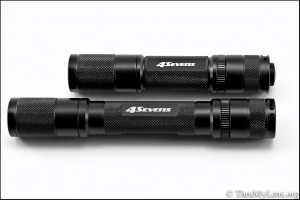 By the time you read this, 4Sevens will have released their refresh models of the extremely popular Quark line of LED flashlights – the new Quark X series featuring CREE’s XM-L LED emitters. The Quark X comes in four different variations – the Quark X AA2 (powered by two AA alkaline batteries) and the Quark X 1232 (powered by two CR123 batteries), and each available in a standard user interface (UI) or tactical UI. 4Sevens sent me two examples for a three week evaluation – the Quark X AA2 in standard UI, and the Quark X 1232 with the tactical UI.
By the time you read this, 4Sevens will have released their refresh models of the extremely popular Quark line of LED flashlights – the new Quark X series featuring CREE’s XM-L LED emitters. The Quark X comes in four different variations – the Quark X AA2 (powered by two AA alkaline batteries) and the Quark X 1232 (powered by two CR123 batteries), and each available in a standard user interface (UI) or tactical UI. 4Sevens sent me two examples for a three week evaluation – the Quark X AA2 in standard UI, and the Quark X 1232 with the tactical UI.
The Quark X AA2
The AA version of the Quark X is 5.8″ long and weighs just 2.2oz., with a maximum output of 280 lumens, with a run time of .8 hours, and a moonlight mode of 0.3 lumens, with a run time of 15 days. Other available output levels are: Low (2.7 lumens), Medium (24 lumens), High (115 lumens), strobe, S.O.S., and Beacon.
The Quark X 1232
By contrast, the CR123 version of the Quark X is shorter and lighter than the AA version, coming in at just 4.5″ long, and weighing 1.8 oz. It also has the same modes and settings available as the AA version, but higher available outputs and run times by virtue of the CR123 power cells. The maximum output of the Quark X 1232 360 lumens with a run time of 1.7 hours, and a moonlight mode that like the AA version is rated at .3 lumens, but with a longer run time of 25 days. Other available output modes are Low (3 lumens), Medium (65 lumens), High (160 lumens), Strobe, S.O.S, and Beacon.
The User Interface: Standard and Tactical
I had the opportunity the sample both of the optional UI’s available for the Quark X – both the AA or the CR123 versions can be purchased in either the standard or tactical UI. Both UI’s feature two different modes – one mode with a fully tightened bezel head, and one with the bezel loosened a half turn. On the standard UI, with the bezel tightened, you have two settings available – max, and strobe. With the bezel loosened a half turn, you have all the other available output modes – moonlight, Low, Medium High, S.O.S, and Beacon. In either mode, you cycle between the settings with a quick half-press of the tail switch.
The Tactical UI has slightly different operation, as well as a different tail switch (with an “instant on” capability) for operation. In each of the two modes (bezel tightened or loosened) you have just one setting from the 8 possible settings, but you have the ability to program which of those output modes are set to. For example, you could have the Quark X Tactical UI set for Maximum output mode when the bezel is tightened, and moonlight when the bezel is loosened. Or Strobe when the bezel is tightened, and Medium when loosened…or any possible combination of the available output modes you can imagine to suit your purposes.
Having tested both UI’s, I believe my personal preference is for the standard UI. The word “tactical” means different things to different people, but a Quark X featuring the Tactical UI really doesn’t fit my definition of a good tactical flashlight (which I define as being designed to use with a firearm) due to how the forward clicking tail switch is designed. It falls into the classic trap many “tactical” flashlights make by making it possible with enough force applied to click the “instant on” forward clicking tail switch into the on position, necessitating the user to depress the switch again to turn it off. In my review of the most excellent 4Sevens Maelstrom X10 Tactical Flashlight, I discuss in detail what a truly good tactical UI entails. There are two reasons you want “instant on/off” capability in a tactical flashlight. The first is that in tactical engagement (again, with a firearm) you want want to be able to quickly get the light on, take your shot(s) and get the light off just as quickly – because it gives away your position to anyone who can return fire on you. The second reason is that during the extreme stress of a tactical engagement, the rational part of the brain tends to take a back seat to the “fight or flight” response to a life threatening situation. When your body and mind is in this condition, it is far preferable to have a flashlight tail switch that simply turns off if you release the pressure beign applied to the switch, vs. actually having to think and actively manipulate the tail switch to turn it off. When you’re calm and rational, the Quark X Tactical UI works fine – apply some pressure for the instant on feature, and more pressure to make the switch click “on.” But guess what’s going to happen in a life threatening situation? You’re heart is racing, your adrenaline is pumping, and you’re not going to be lightly pressing on that tail switch – you’re going to inadvertently click it in the “stay on” position. Which will necessitate your having to actively think and manipulate the switch to deactivate the light – a less than ideal position to be in during a tactical engagement. So I don’t really see either UI as being suitable for true tactical use, but consider that the Standard UI have what many users look for in a “tactical” UI when the bezel is tightened – the Maximum output setting and the Strobe setting. Plus, you can tail-stand the standard UI Quark X models, which you cannot do with the Tactical UI models, due to the protruding instant-on tail switch. Now I think many users will like the simple operation of the Tactical UI as compared to the standard UI. I just think there’s better choices for a truly tactical flashlight, like the previously mentioned Maelstrom X10.
Besides the UI and size/power cell differences, the Quark X models all offer the same quality level of construction, excellent knurling, and great pocket clips we’ve come to expect from 4Sevens flashlights:
Both models also offer an “orange peel” textured reflector on all the Quark X models, favoring flood over throw:
As a supplement to my written photo review, I’ve prepared video footage of these Quark X flashlights, which includes beam tests:
Fans of the 4Sevens Quark line will definitely like the XM-L emitter refresh which 4Sevens has done on the new Quark X line. The retail price for the CR123 versions of the Quark X is $69.00, while the retail price of the AA versions is $59.00.

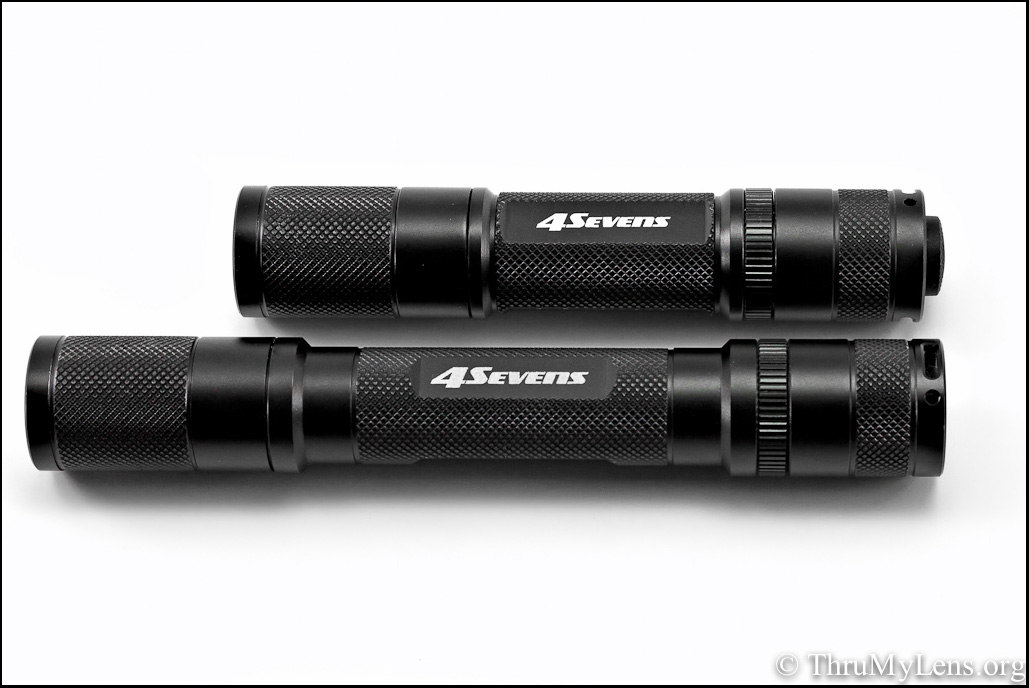
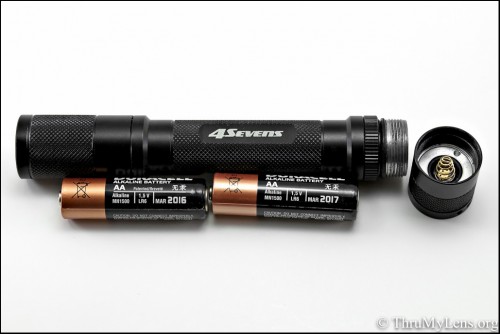

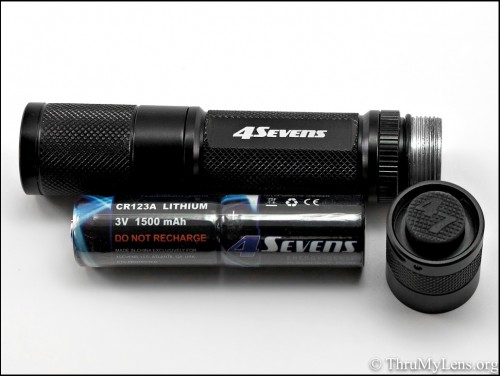
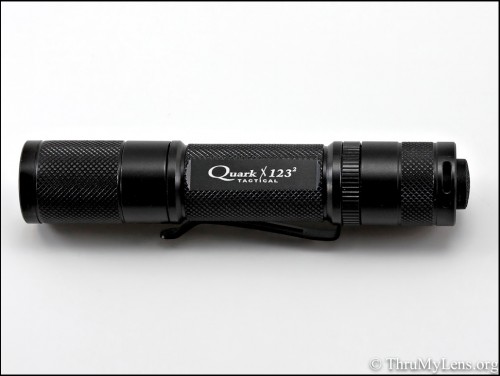
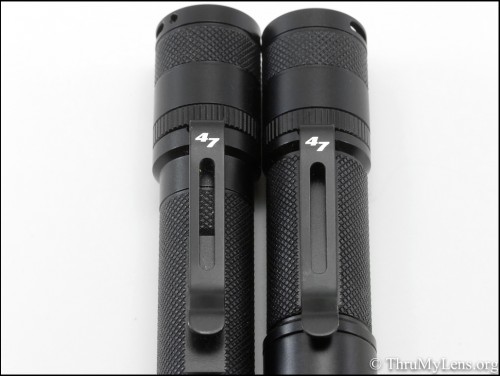
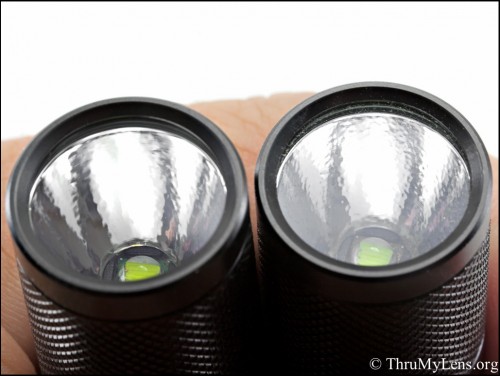
Thx for information.
You’re most welcome!